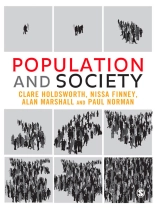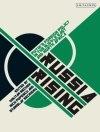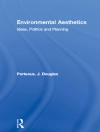‘An excellent introduction to the study of population and its significance for many of the key social, political, cultural and environmental issues facing the world today. It covers population growth, ageing, migration and mobility, parenting, health inequalities, and much more… The authors do not shy away from areas of continuing debate, providing both sides of an argument and encouraging readers to follow up the original sources’
– Tony Champion, Emeritus Professor of Population Geography, Centre for Urban, Regional & Development Studies, Newcastle University and Vice President, British Society for Population Studies, 2011-2013
Population and Society is an undergraduate introduction to population that explains the latest trends in population studies. The text provides a detailed and completely accessible overview that:
- situates demographic events – fertility, mortality and migration – within the context of broader social impacts and theorisations like social inequalities, individualisation and life course analysis
- uses global illustrative examples to demonstrate the importance of data and data interpretation in population studies
- is illustrated throughout with pedagogic features, like chapter opening summaries, suggestions for further readings and case study examples.
This text will be widely used as the standard and most up-to-date text on population and society for courses across the social sciences.
Tabela de Conteúdo
Introduction
Transitions: Thinking about Population over Time
Population Projections and Data
Population Structures
Analyzing Fertility and Mortality
Migration
Living Arrangements
Family Formation
Health Inequalities
Population Futures
References
Sobre o autor
Dr. Paul Norman is an applied demographer/population and health geographer at the University of Leeds with expertise in time-series and longitudinal analyses of both area and individual-level data derived from census, survey, and administrative records using demographic, statistical, and geographic information system (GIS) methods.












